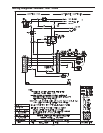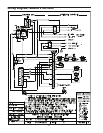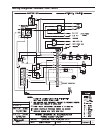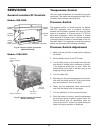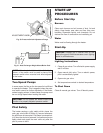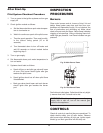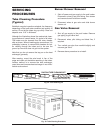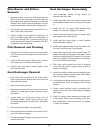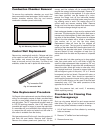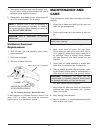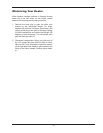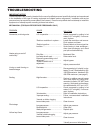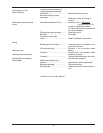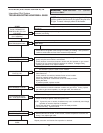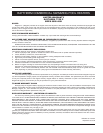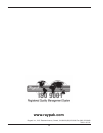
29
Combustion Chamber Removal
To remove the combustion chamber you must first
have removed the heat exchanger. Unbolt metal com-
bustion chamber retainer from top and remove
combustion chamber panels individually.
Control Well Replacement
Remove top, sensing bulb and clip. Collapse well tube
at the open end and with a chisel, push through into
the header, and remove the well through header.
Insert a new well and roll into place. If a roller is not
available, solder the well in place with silver solder.
Tube Replacement Procedure
On Raypak tube replacement may be affected without
rolling, as a temporary means of repair, provided there
are two or more tubes rolled into act as stays on left
and right sides. The "O" rings should provide a seal up
to 125 PSI working pressure. Use a 3/8" heavy duty
reversible drill motor or larger, to power the tube roller.
If a reversible drill is not available, after rolling the tube
in, remove the drill motor and wrench out the roller. A
tube roller is available from the factory.
Shut gas and power off to the unit, close the system off
and drain the pool heater. Remove draft diverter.
Remove the access panels and jacket top. Lift the
canopy and flue collector off (on models 926-1826,
remove the canopy hold-down brackets). Remove "V"
baffles over tube(s) to be replaced. If no pipe unions
have been provided, use the header as a union,
remove the flange nuts off the inlet-outlet header,
break gas connection and slide heater away from pip-
ing, allowing room to work. Pull wedge clips out of
control wells and remove sensing bulbs. Remove
flange nuts from the return header and remove head-
er. Lift heat exchanger straight up and out.
Heat exchanger header o-rings must be replaced with
new ones. The tube may be cut out with a hack-saw or
hammer and chisel adjacent to both tube sheets, leav-
ing stubs in the tube sheets. Then proceed to collapse
stubs in the tube sheets with a chisel or screwdriver.
Use caution not to cut into the tube sheet.
Replacement tubes will have the fins stripped off
longer on one end. The long end is inserted into the
opening of the tube sheet first; then the short end is fit-
ted through the opposite tube sheet. If the tube ends
become dented or bent, straighten at least four (4)
inches back from the tube end by means of a tapered
punch.
Insert tube roller into tube opening up to stop against
tube, then push center rod in until roller is tight. Be
careful to keep replacement tube squared up 1/8" out-
side each tube sheet. A loose tube will sometimes pull
toward the roller. Attach drill motor to tube roller, hold-
ing it straight and level. Proceed to expand tube until
the tool begins to grab. At this point, 1/2" to 1" should
be exposed on the tool shank. Reverse drill motor or
wrench out by hand. Care should be exercised to
avoid applying excessive torque during rolling opera-
tion and to avoid thinning out any part of the tube wall
excessively over .015". Use same procedure at the
opposite end of the tube.
Apply line pressure test, and re-roll, if necessary,
before replacing canopy.
Procedure For Cleaning Flue
Gas Passageways
Soot can clog areas behind fins and cause eventual
tube failure. Any sign of soot at base of burners or
around outer jacket indicates a need for cleaning.
1. Lift off draft hood and flue collector by removing
bolts and screws.
2. Remove "V" baffles from heat exchanger.
3. Remove burner tray.
Fig. 36: Refractory Panels—Top View
Immersion Well
Fig. 37: Immersion Well



